Publications
A list of selected papers in which research team members participated.
For a full list see below or go to Google Scholar (Jisun An and Haewoon Kwak).
computational journalism
political science
network science
game analytics
AI/ML/NLP
HCI
online harm
dataset/tool
bias/fairness
user engagement
computational journalism AI/ML/NLP online harm bias/fairness
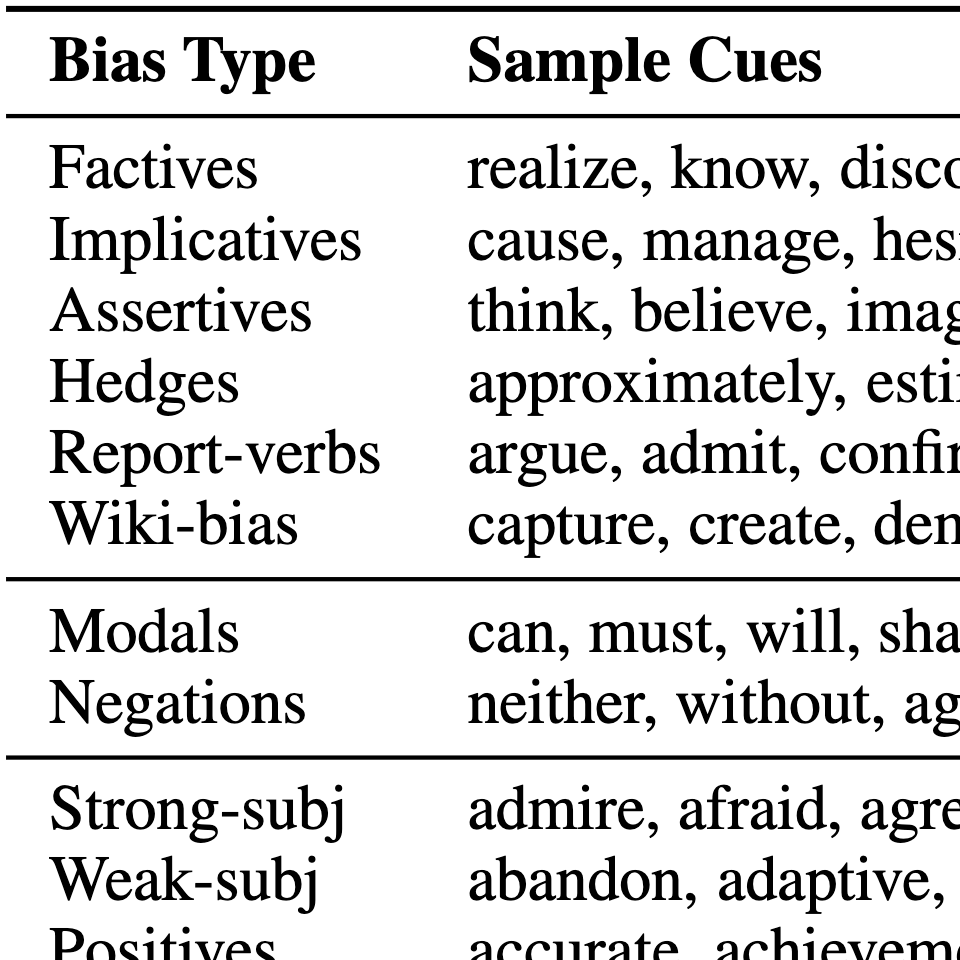
How can we spot fake news? We go beyond single articles to evaluate the credibility of entire news outlets. Discover the present and future of new technologies that can rapidly identify sources of disinformation by jointly analyzing their factuality and political bias.
Preslav Nakov, Jisun An, Haewoon Kwak, Muhammad Arslan Manzoor, Zain Muhammad Mujahid, Husrev Taha Sencar
computational journalism online harm
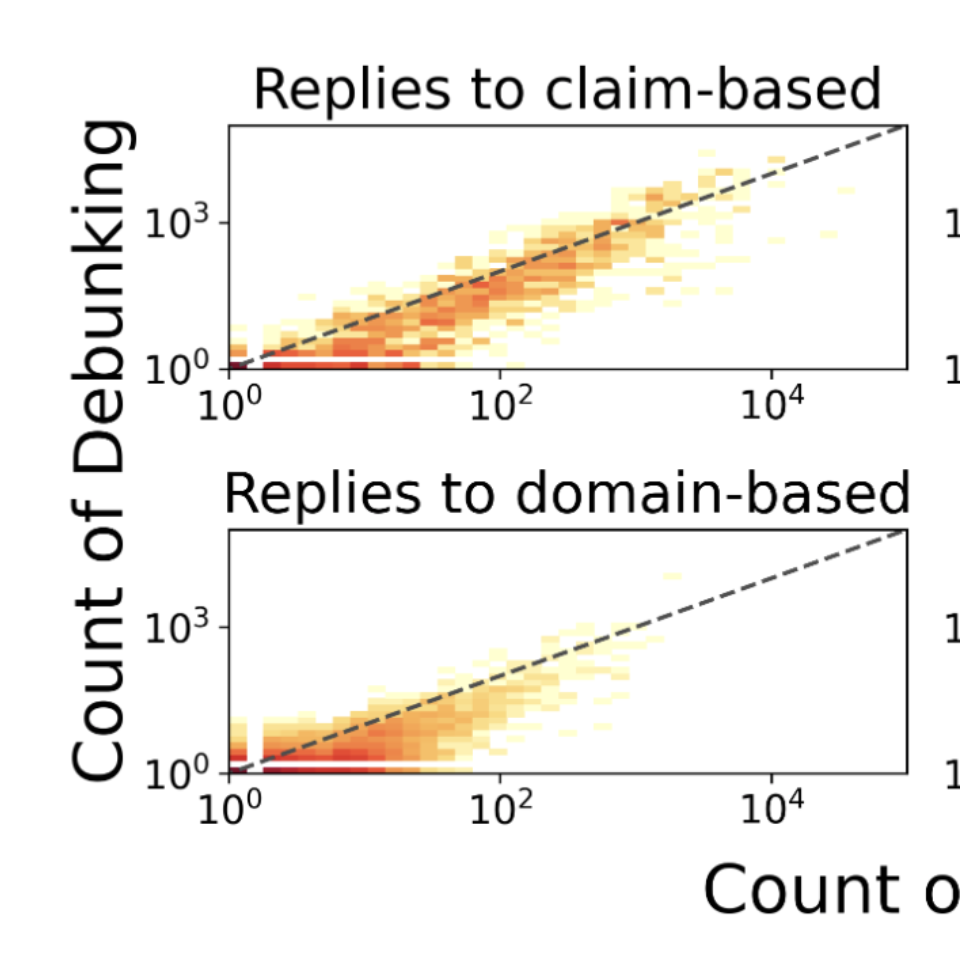
False information spreads on social media, and fact-checkingis a potential countermeasure. However, there is a severeshortage of fact-checkers; an efficient way to scale fact-checking is desperately needed, especially in pandemics likeCOVID-19. In this study, we focus on spontaneous debunk-ing by social media users, which has been missed in exist-ing research despite its indicated usefulness for fact-checkingand countering false information. Specifically, we character-ize the tweets with false information, or fake tweets, thattend to be debunked and Twitter users who often debunk faketweets.
Kunihiro Miyazaki, Takayuki Uchiba, Kenji Tanaka, Jisun An, Haewoon Kwak, Kazutoshi Sasahara
computational journalism user engagement
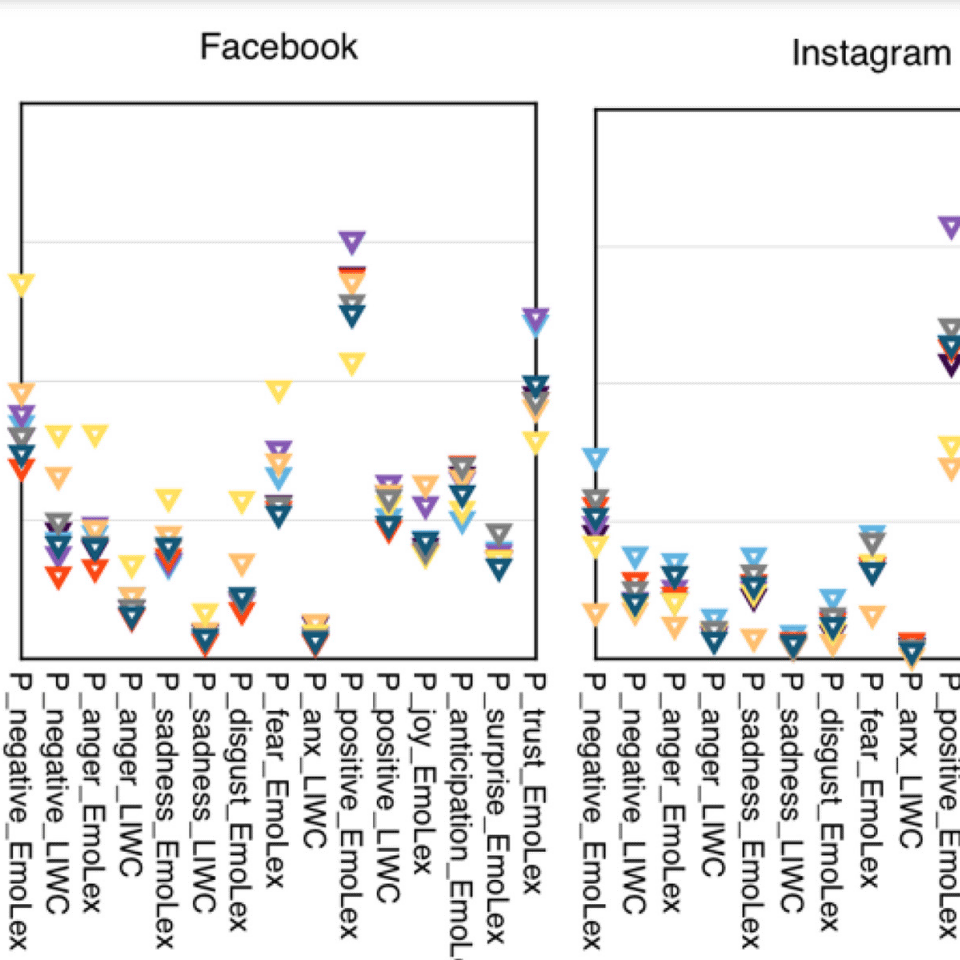
Using Plutchik’s wheel of emotions framework, we identify the emotional content of 133,487 social media posts and the audience’s emotional engagement expressed in 2,824,162 comments on those posts. We measure nine emotions (anger, anticipation, anxiety, disgust, joy, fear, sadness, surprise, trust) and two sentiments (positive and negative) using two extraction resources (EmoLex, LIWC) for eight major news outlets across four social media platforms (Facebook, Instagram, Twitter, and YouTube) during eight months. We then apply two approaches (Logistic Regression, Long Short-Term Memory) to predict emotional audience reactions before and after publishing the posts. …
Kholoud Khalil Aldous, Jisun An, Bernard J. Jansen
ACM Transactions on Social Computing, 2022
computational journalism user engagement
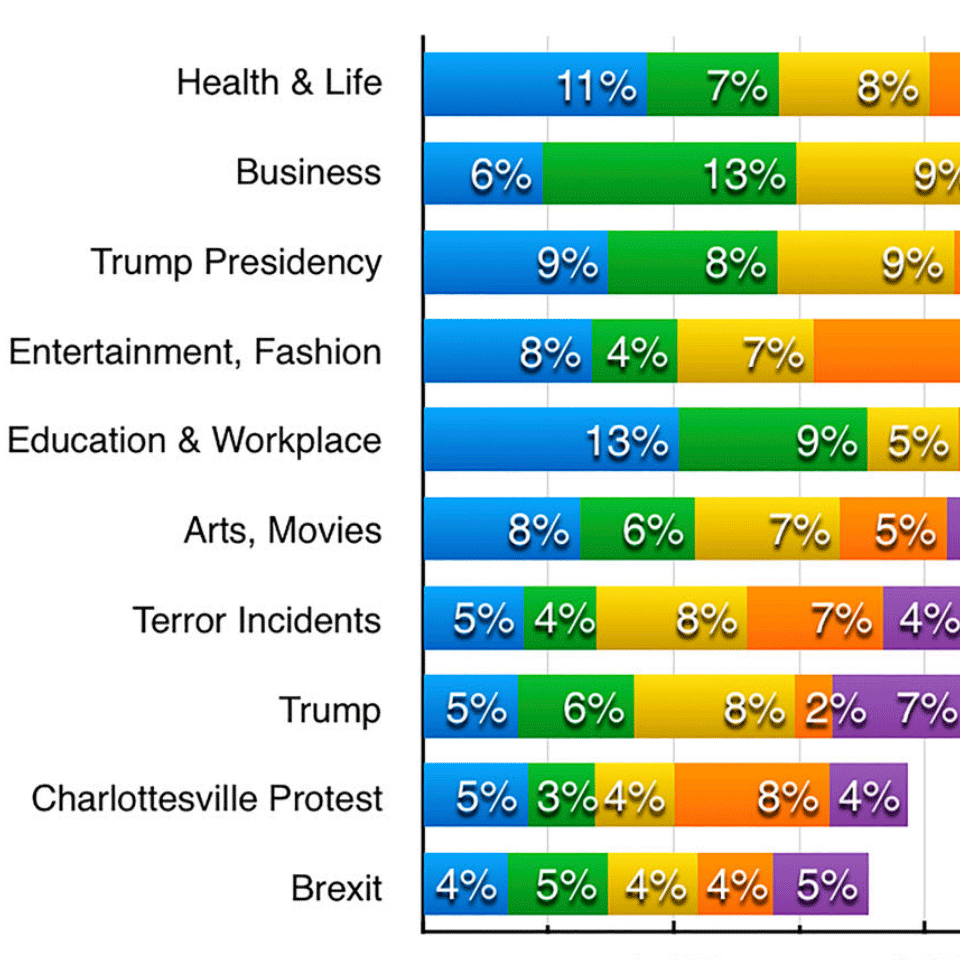
This research characterises user engagement of approximately 3,000,000 news postings of 53 news outlets and 50,000,000 associated user comments during 8 months on 5 social media platforms (i.e. Facebook, Instagram, Twitter, YouTube, and Reddit). We investigate the effect of sentiments and topics on user engagement across four levels of user engagement expressions (i.e. views, likes, comments, cross-platform posting). We find that sentiments and topics differ by both news outlets and social media platforms, and both sentiments and topics by the four levels of user engagement expression. …
Kholoud Khalil Aldous, Jisun An, Bernard J. Jansen
Behaviour & Information Technology, 2022
computational journalism AI/ML/NLP user engagement
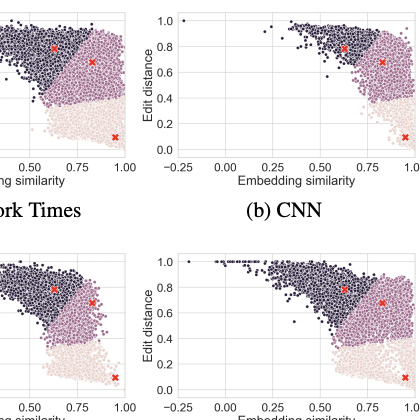
We first build a parallel corpus of original news articles and their corresponding tweets that were shared by eight media outlets. Then, we explore how those media edited tweets against original headlines, and the effects would be..
Kunwoo Park, Haewoon Kwak, Jisun An, Sanjay Chawla
Proceedings of the 15th International AAAI Conference on Web and Social Media (ICWSM), 2021
computational journalism AI/ML/NLP bias/fairness
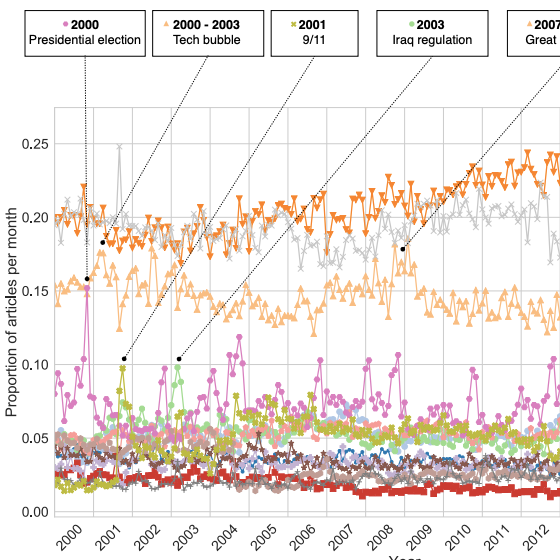
Framing is an indispensable narrative device for news media because even the same facts may lead to conflicting understandings if deliberate framing is employed. By developing a media frame classifier that achieves state-of-the-art performance, we systematically analyze the media frames of 1.5 million New York Times articles published from 2000 to 2017.
Haewoon Kwak, Jisun An, Yong-Yeol Ahn
Proceedings of the 12th ACM Conference on Web Science (WebSci), 2020
computational journalism network science bias/fairness
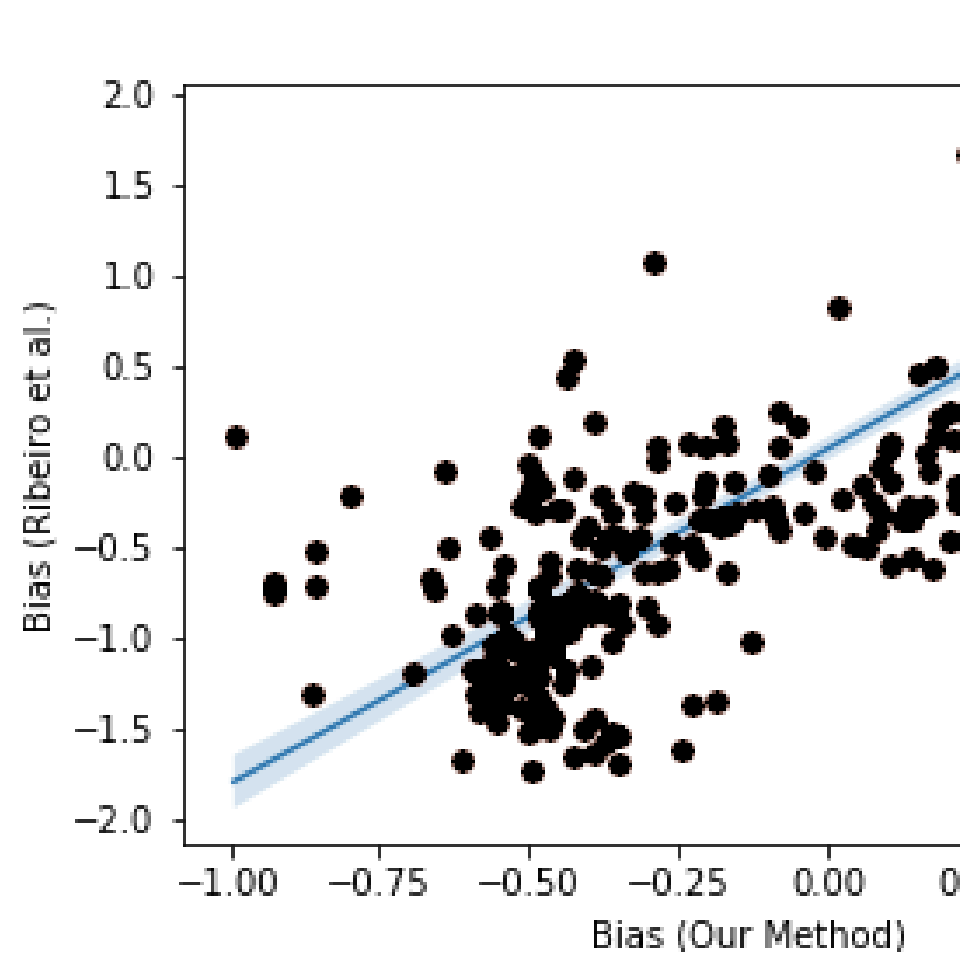
In this work, we propose a graph-based semi-supervised method to measure the political bias of pages on most countries and show the political split of the alternative media, mainstream media, and public figures pages. We validate our method using the publicly available U.S. dataset and then apply it to Brazilian pages, where we found a larger number of right-wing pages in general, except for alternative news media.
Samuel S Guimarães, Julio CS Reis, Lucas Lima, Filipe N Ribeiro, Marisa Vasconcelos, Jisun An, Haewoon Kwak, Fabrício Benevenuto
IEEE/ACM International Conference on Advances in Social Networks Analysis and Mining (ASONAM), 2020
computational journalism AI/ML/NLP bias/fairness
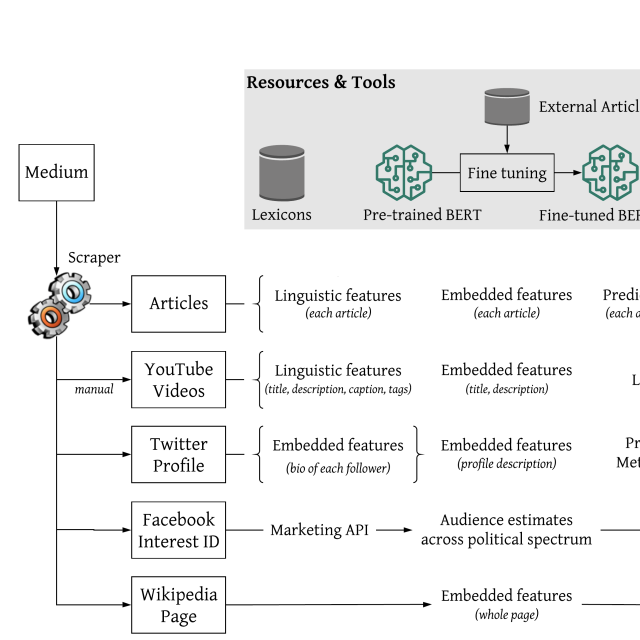
Predicting the political bias and the factuality of reporting of entire news outlets are critical elements of media profiling, which is an understudied but an increasingly important research direction. The present level of proliferation of fake, biased, and propagandistic content online has made it impossible to fact-check every single suspicious claim, either manually or automatically. Thus, it has been proposed to profile entire news outlets and to look for those that are likely to publish fake or biased content. This makes it possible to detect likely “fake news” the moment they are published, by simply checking the reliability of their source. From a practical perspective, political bias and factuality of reporting have a linguistic aspect but also a social context.
Ramy Baly, Georgi Karadzhov, Jisun An, Haewoon Kwak, Yoan Dinkov, Ahmed Ali, James Glass, Preslav Nakov
Proceedings of the 58th Annual Meeting of the Association for Computational Linguistics (ACL) (2020)
computational journalism AI/ML/NLP dataset/tool bias/fairness
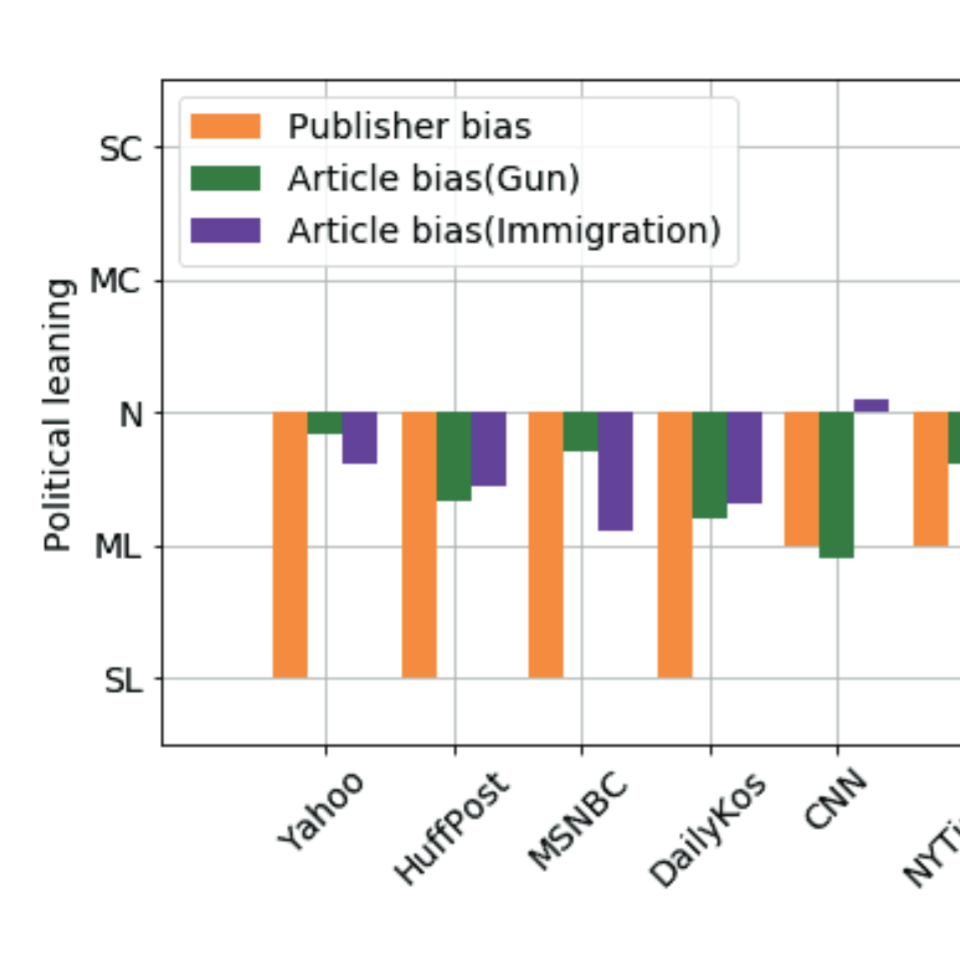
We empirically validate three common assumptions in building political media bias datasets, which are (i) labelers’ political leanings do not affect labeling tasks, (ii) news articles follow their source outlet’s political leaning, and (iii) political leaning of a news outlet is stable across different topics.
Soumen Ganguly, Juhi Kulshrestha, Jisun An, Haewoon Kwak
Proceedings of the 14th International AAAI Conference on Web and Social Media (ICWSM), 2020
computational journalism AI/ML/NLP bias/fairness dataset/tool
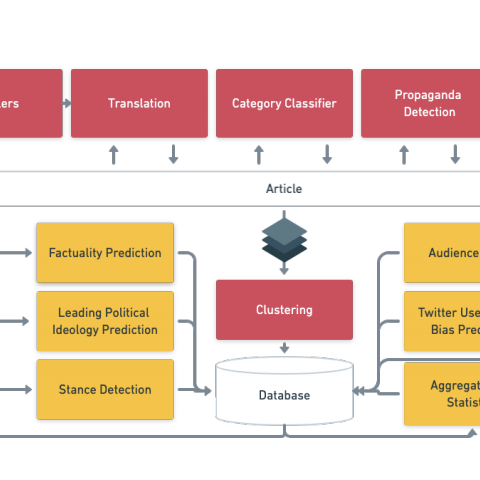
We introduce Tanbih, a news aggregator with intelligent analysis tools to help readers understanding what’s behind a news story. Our system displays news grouped into events and generates media profiles that show the general factuality of reporting, the degree of propagandistic content, hyper-partisanship, leading political ideology, general frame of reporting, and stance with respect to various claims and topics of a news outlet.
Yifan Zhang, Giovanni Da San Martino, Alberto Barrón-Cedeño, Salvatore Romeo, Jisun An, Haewoon Kwak, Todor Staykovski, Israa Jaradat, Georgi Karadzhov, Ramy Baly, Kareem Darwish, James Glass, Preslav Nakov (demo)
computational journalism user engagement
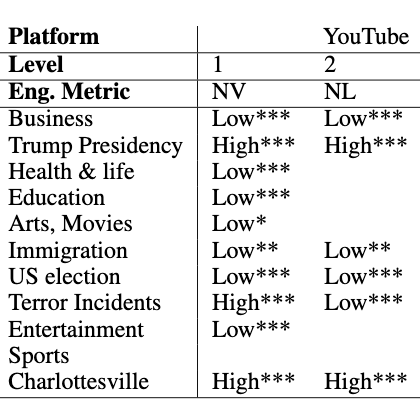
We evaluate the effects of the topics of social media posts on audiences across five social media platforms (i.e., Facebook, Instagram, Twitter, YouTube, and Reddit) at four levels of user engagement. We collected 3,163,373 social posts from 53 news organizations across five platforms during an 8month period.
Kholoud Khalil Aldous, Jisun An, Bernard J. Jansen
Proceedings of the 13th International AAAI Conference on Web and Social Media (ICWSM), 2019
computational journalism
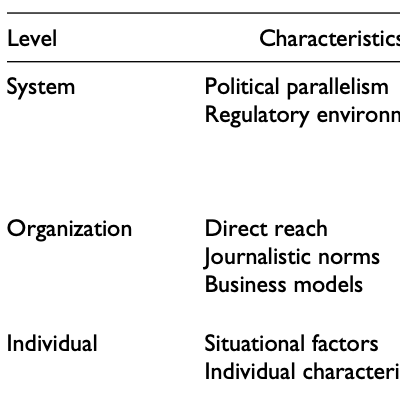
We propose the concept of discursive power. This describes the ability of contributors to communication spaces to introduce, amplify, and maintain topics, frames, and speakers, thus shaping public discourses and controversies that unfold in interconnected communication spaces.
Andreas Jungherr, Oliver Posegga, Jisun An
The International Journal of Press/Politics, 24(4), 2019
computational journalism network science
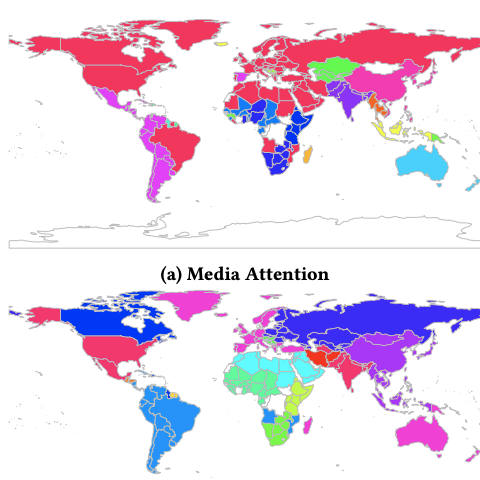
We investigate the alignment of international attention of news media organizations within 193 countries with the expressed international interests of the public within those same countries from March 7, 2016 to April 14, 2017. We collect fourteen months of longitudinal data of online news from Unfiltered News and web search volume data from Google Trends and build a multiplex network of media attention and public attention in order to study its structural and dynamic properties.
Haewoon Kwak, Jisun An, Joni Salminen, Soon-Gyo Jung, Bernard J. Jansen.
Proceedings of the 2018 World Wide Web Conference (WWW), 2018
computational journalism network science
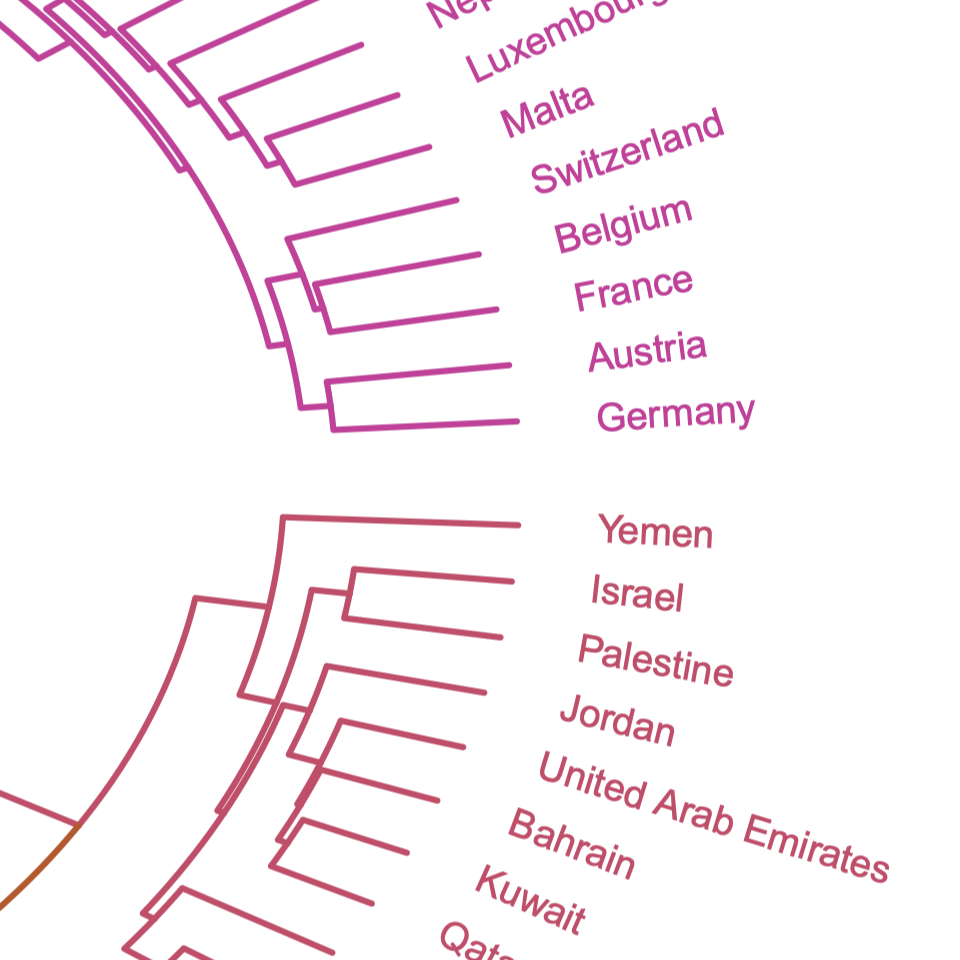
The objective of this study is to assess the longitudinal trends of media similarity and dissimilarity on the international scale. As news value has well-established political, cultural, and economic consequences, the degree to which media coverage and content is converging across countries has implications for international relations. To study this convergence, we use the daily data of the 100 topics that were overreported in each country, compared to other countries, from March 7 to October 9, 2016.
Jisun An, Hassan Aldarbesti, Haewoon Kwak
Proceedings of Social Informatics (SocInfo), 2017 (short)
computational journalism user engagement
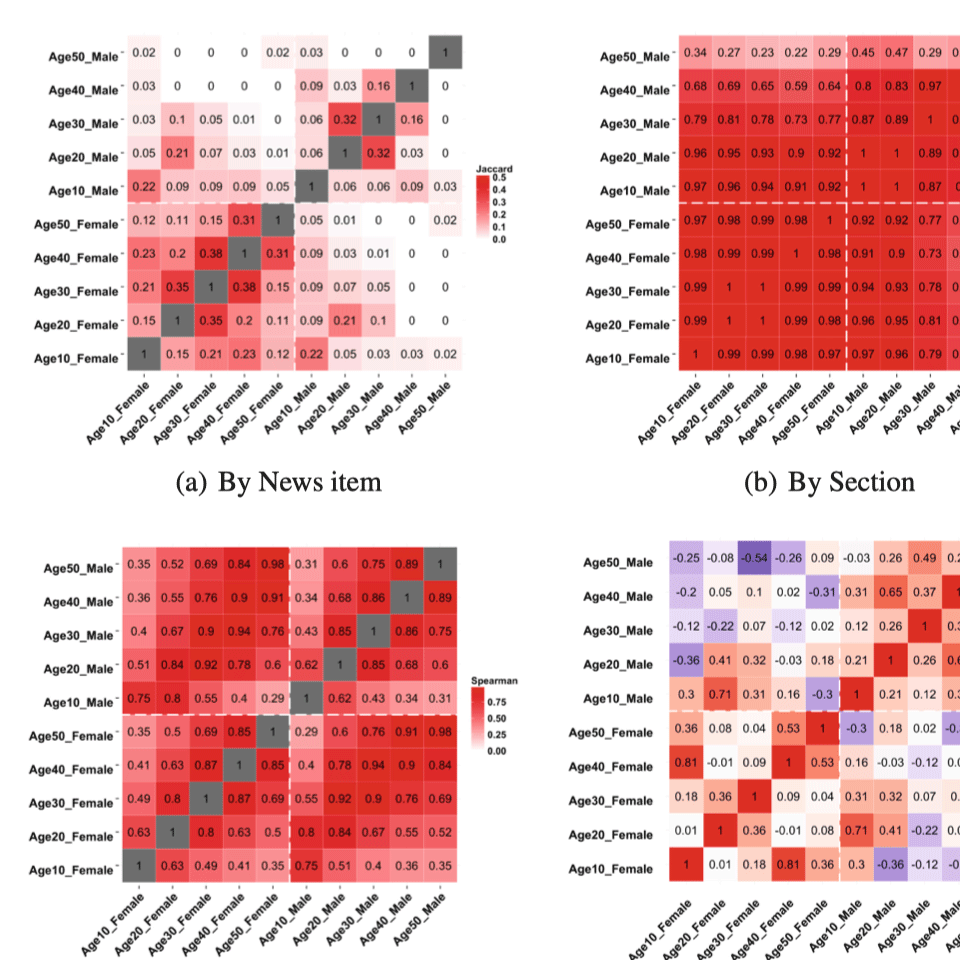
Examining 103,133 news articles that are the most popular for different demographic groups in Daum News (the second most popular news portal in South Korea) during the whole year of 2015, we provided multi-level analyses of gender and age differences in news consumption. We measured such differences in four different levels - (1) by actual news items, (2) by section, (3) by topic, and (4) by subtopic. We characterized the news items at the four levels by using the computational techniques, which are topic modeling and the vector representation of words and news items. We found that differences in news reading behavior across different demographic groups are the most noticeable in subtopic level but neither section nor topic levels.
Jisun An, Haewoon Kwak
Proceedings of Social Informatics (SocInfo), 2017
computational journalism network science
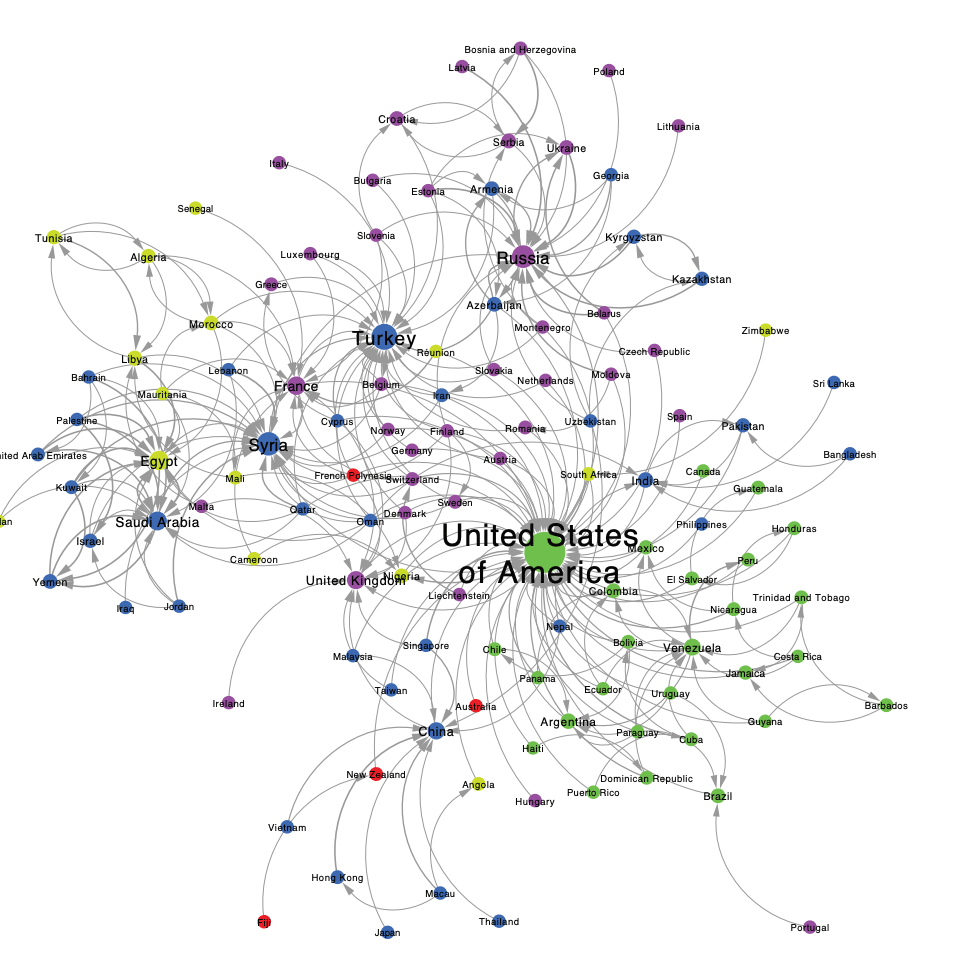
We built a multiplex media attention and disregard network (MADN) among 129 countries over 212 days. By characterizing the MADN from multiple levels, we found that it is formed primarily by skewed, hierarchical, and asymmetric relationships. Also, we found strong evidence that our news world is becoming a “global village.” However, at the same time, unique attention blocks of the Middle East and North Africa (MENA) region, as well as Russia and its neighbors, still exist.
Haewoon Kwak, Jisun An
computational journalism user engagement
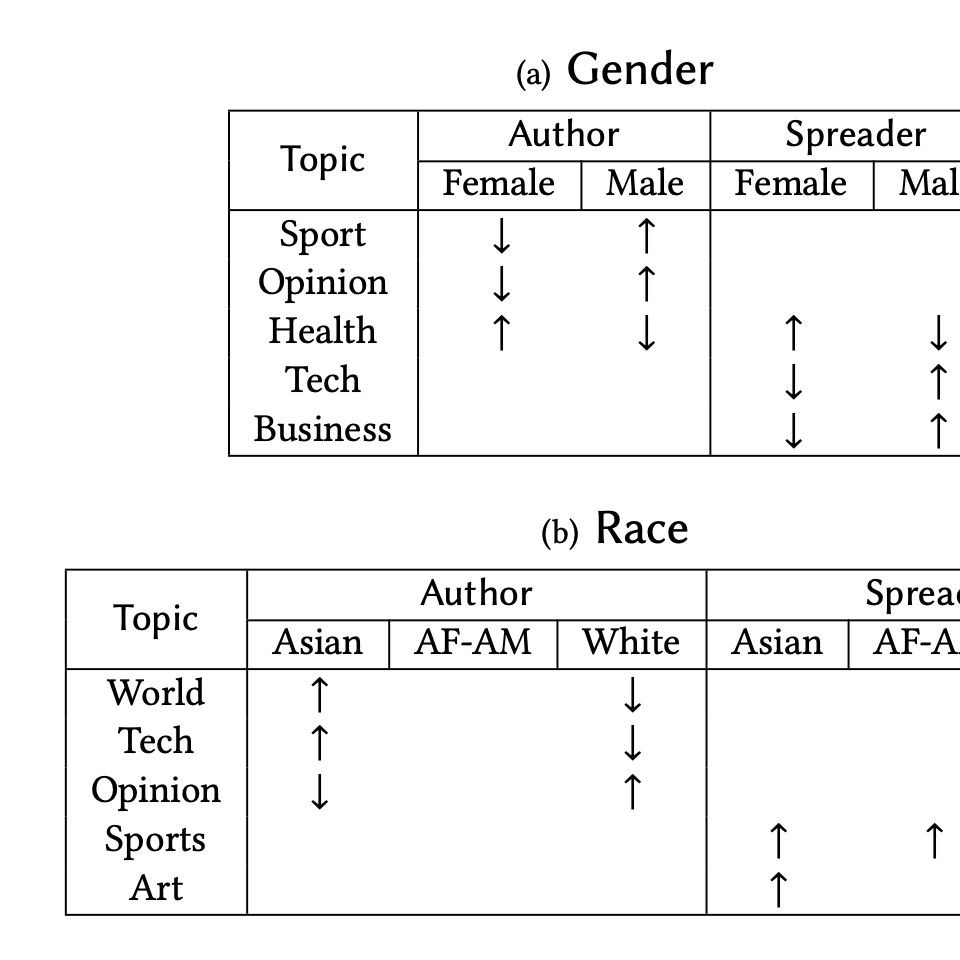
The widespread adoption and dissemination of online news through social media systems have been revolutionizing many segments of our society and ultimately our daily lives. In these systems, users can play a central role as they share content to their friends. Despite that, little is known about news spreaders in social media. In this paper, we provide the first of its kind in-depth characterization of news spreaders in social media. In particular, we investigate their demographics, what kind of content they share, and the audience they reach.
Julio Reis, Haewoon Kwak, and Jisun An, Johnnatan Messias, Fabrıcio Benevenuto
Proceedings of the 28th ACM Conference on Hypertext and Social Media (HT), 2017
computational journalism bias/fairness
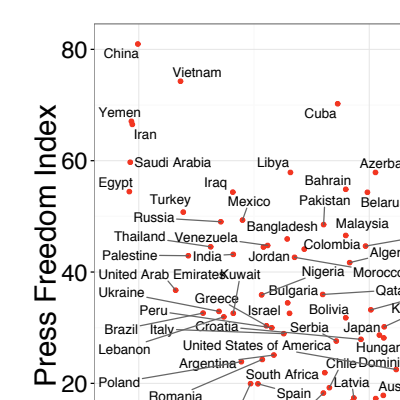
Published by Reporters Without Borders every year, the Press Freedom Index (PFI) reflects the fear and tension in the newsroom pushed by the government and private sectors. While the PFI is invaluable in monitoring media environments worldwide, the current survey-based method has inherent limitations to updates in terms of cost and time. In this work, we introduce an alternative way to measure the level of press freedom using media attention diversity compiled from Unfiltered News.
Jisun An, Haewoon Kwak
Proceedings of the ICWSM Workshop on NEws and publiC Opinion (NECO), 2017
Picked as The Best of the Physics arXiv (week ending April 15, 2017) in MIT Technology Review
computational journalism AI/ML/NLP bias/fairness dataset/tool
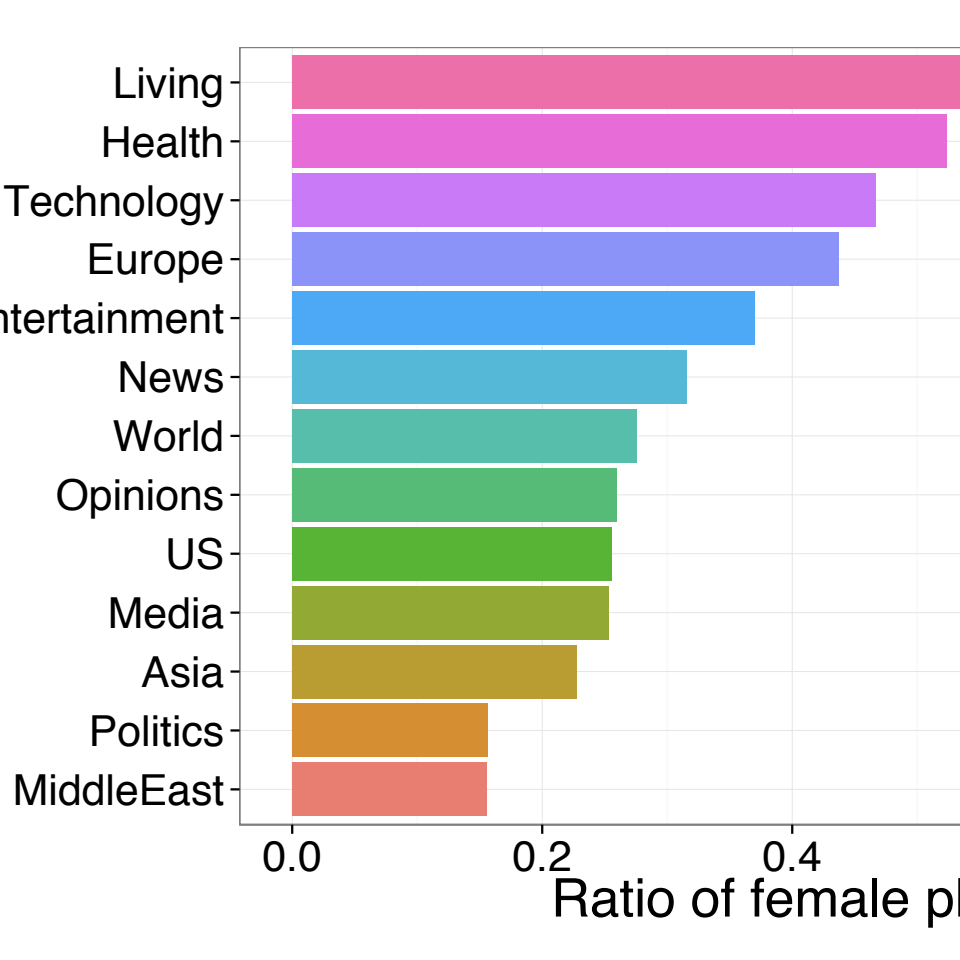
In this work, we analyze more than two million news photos published in January 2016. We demonstrate i) which objects appear the most in news photos; ii) what the sentiments of news photos are; iii) whether the sentiment of news photos is aligned with the tone of the text; iv) how gender is treated; and v) how differently political candidates are portrayed. To our best knowledge, this is the first large-scale study of news photo contents using deep learning-based vision APIs.
Haewoon Kwak, Jisun An
ICWSM Workshop on NEws and publiC Opinion (NECO), 2016
Picked as The Best of the Physics arXiv (week ending March 26, 2016) in MIT Technology Review
computational journalism dataset/tool bias/fairness
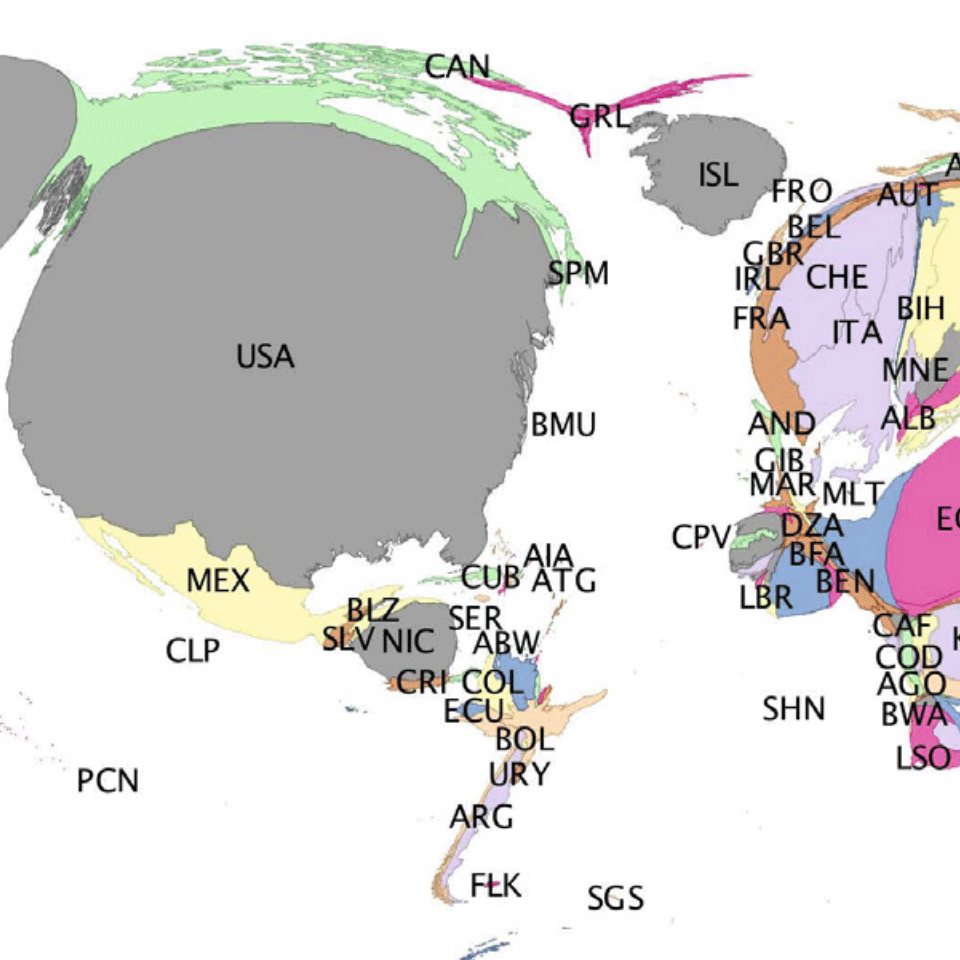
In this work, we reveal the structure of global news coverage of disasters and its determinants by using a large-scale news coverage dataset collected by the GDELT (Global Data on Events, Location, and Tone) project that monitors news media in over 100 languages from the whole world. Significant variables in our hierarchical (mixed-effect) regression model, such as population, political stability, damage, and more, are well aligned with a series of previous research. However, we find strong regionalism in news geography, highlighting the necessity of comprehensive datasets for the study of global news coverage.
Haewoon Kwak, Jisun An
Proceedings of Social Informatics, 2014
Press Coverage-MIT Technology Review, ACM TechNews
computational journalism network science
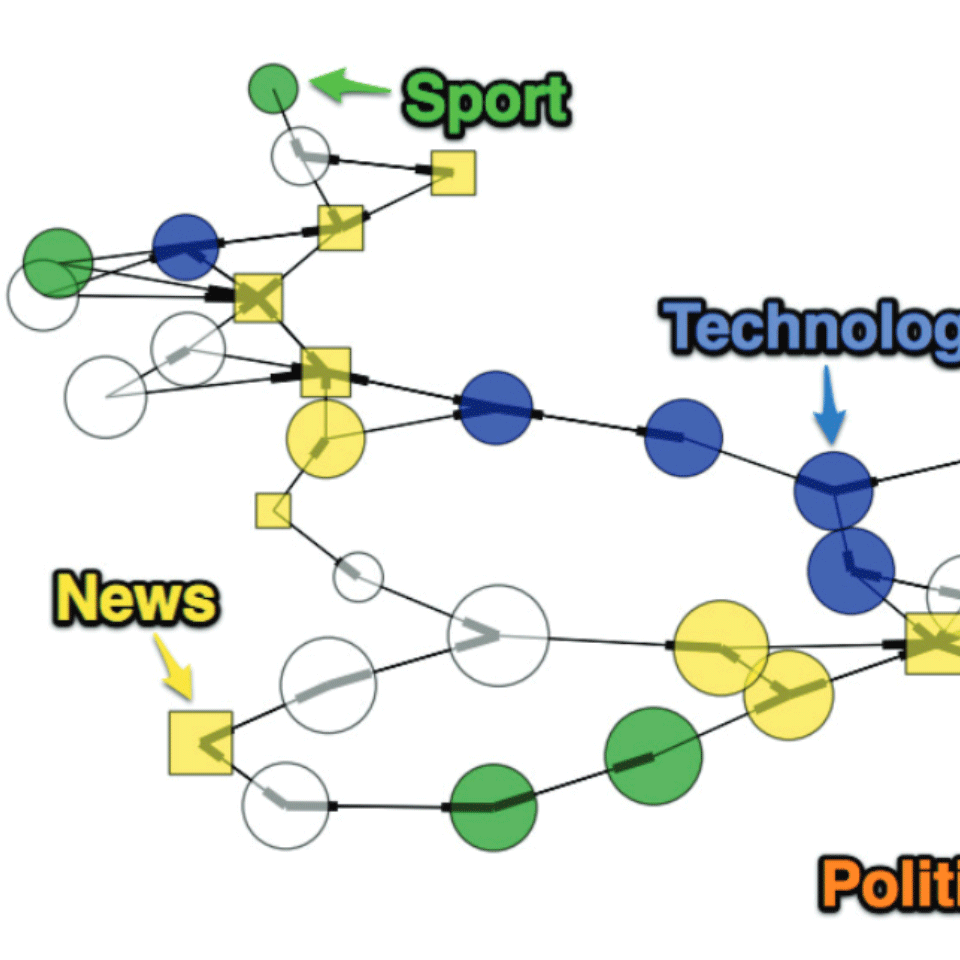
We present a preliminary but groundbreaking study of the media landscape of Twitter. We use public data on whom follows who to uncover common behaviour in media consumption, the relationship between various classes of media, and the diversity of media content which social links may bring. Our analysis shows that there is a non-negligible amount of indirect media exposure, either through friends who follow particular media sources, or via retweeted messages. We show that the indirect media exposure expands the political diversity of news to which users are exposed to a surprising extent, increasing the range by between 60-98%. These results are valuable because they have not been readily available to traditional media, and they can help predict how we will read news, and how publishers will interact with us in the future.
Jisun An, Meeyoung Cha, Krishna Gummadi, Jon Crowcroft
Proceedings of the 5th International AAAI Conference on Weblogs and Social Media (ICWSM), 2011.
Full List
A Survey on Predicting the Factuality and the Bias of News Media
Preslav Nakov, Jisun An, Haewoon Kwak, Muhammad Arslan Manzoor, Zain Muhammad Mujahid, Husrev Taha Sencar
ACL Findings, 2024
15+ papers citing this work (Google scholar)
‘This is Fake News’: Characterizing the Spontaneous Debunking from Twitter Users to COVID-19 False Information
Kunihiro Miyazaki, Takayuki Uchiba, Kenji Tanaka, Jisun An, Haewoon Kwak, Kazutoshi Sasahara
AAAI ICWSM, 2023
10+ papers citing this work (Google scholar)
Measuring 9 Emotions of News Posts from 8 News Organizations across 4 Social Media Platforms for 8 Months
Kholoud Khalil Aldous, Jisun An, Bernard J. Jansen
ACM Transactions on Social Computing, 2022
10+ papers citing this work (Google scholar)
What really matters?: characterising and predicting user engagement of news postings using multiple platforms, sentiments and topics
Kholoud Khalil Aldous, Jisun An, Bernard J. Jansen
Behaviour & Information Technology, 2022
10+ papers citing this work (Google scholar)
How-to Present News on Social Media: A Causal Analysis of Editing News Headlines for Boosting User Engagement
Kunwoo Park, Haewoon Kwak, Jisun An, Sanjay Chawla
Proceedings of the 15th International AAAI Conference on Web and Social Media (ICWSM), 2021
15+ papers citing this work (Google scholar)
A Systematic Media Frame Analysis of 1.5 Million New York Times Articles from 2000 to 2017
Haewoon Kwak, Jisun An, Yong-Yeol Ahn
Proceedings of the 12th ACM Conference on Web Science (WebSci), 2020
40+ papers citing this work (Google scholar)
Identifying and Characterizing Alternative News Media on Facebook
Samuel S Guimarães, Julio CS Reis, Lucas Lima, Filipe N Ribeiro, Marisa Vasconcelos, Jisun An, Haewoon Kwak, Fabrício Benevenuto
IEEE/ACM International Conference on Advances in Social Networks Analysis and Mining (ASONAM), 2020
What Was Written vs. Who Read It: News Media Profiling Using Text Analysis and Social Media Context
Ramy Baly, Georgi Karadzhov, Jisun An, Haewoon Kwak, Yoan Dinkov, Ahmed Ali, James Glass, Preslav Nakov
Proceedings of the 58th Annual Meeting of the Association for Computational Linguistics (ACL) (2020)
55+ papers citing this work (Google scholar)
Empirical Evaluation of Three Common Assumptions in Building Political Media Bias Datasets
Soumen Ganguly, Juhi Kulshrestha, Jisun An, Haewoon Kwak
Proceedings of the 14th International AAAI Conference on Web and Social Media (ICWSM), 2020
25+ papers citing this work (Google scholar)
Tanbih: Get To Know What You Are Reading
Yifan Zhang, Giovanni Da San Martino, Alberto Barrón-Cedeño, Salvatore Romeo, Jisun An, Haewoon Kwak, Todor Staykovski, Israa Jaradat, Georgi Karadzhov, Ramy Baly, Kareem Darwish, James Glass, Preslav Nakov (demo)
Proceedings of the 2019 Conference on Empirical Methods in Natural Language Processing and the 9th International Joint Conference on Natural Language Processing (EMNLP-IJCNLP), 2019
Predicting Audience Engagement Across Social Media Platforms in the News Domain
Kholoud Khalil Aldous, Jisun An, Bernard J. Jansen
Proceedings of Social Informatics (SocInfo), 2019
View, Like, Comment, Post: Analyzing User Engagement by Topic at 4 Levels across 5 Social Media Platforms for 53 News Organizations
Kholoud Khalil Aldous, Jisun An, Bernard J. Jansen
Proceedings of the 13th International AAAI Conference on Web and Social Media (ICWSM), 2019
85+ papers citing this work (Google scholar)
The Challenges of Creating Engaging Content: Results from a Focus Group Study of a Popular News Media Organization
Kholoud Khalil Aldous, Jisun An, Bernard J. Jansen (Extended Abstracts)
Extended Abstracts of the 2019 CHI Conference on Human Factors in Computing Systems (CHI), 2019
Discursive Power in Contemporary Media Systems: A Comparative Framework
Andreas Jungherr, Oliver Posegga, Jisun An
The International Journal of Press/Politics, 24(4), 2019
130+ papers citing this work (Google scholar)
What We Read, What We Search: Media Attention and Public Attention among 193 Countries
Haewoon Kwak, Jisun An, Joni Salminen, Soon-Gyo Jung, Bernard J. Jansen.
Proceedings of the 2018 World Wide Web Conference (WWW), 2018
20+ papers citing this work (Google scholar)
Convergence of Media Attention Across 129 Countries
Jisun An, Hassan Aldarbesti, Haewoon Kwak
Proceedings of Social Informatics (SocInfo), 2017 (short)
Multidimensional Analysis of the News Consumption of Different Demographic Groups on a Nationwide Scale
Jisun An, Haewoon Kwak
Proceedings of Social Informatics (SocInfo), 2017
Multiplex Media Attention and Disregard Network among 129 Countries
Haewoon Kwak, Jisun An
Proceedings of the IEEE/ACM International Conference on Advances in Social Networks Analysis and Mining (ASONAM), 2017
Demographics of News Sharing in the US Twittersphere
Julio Reis, Haewoon Kwak, and Jisun An, Johnnatan Messias, Fabrıcio Benevenuto
Proceedings of the 28th ACM Conference on Hypertext and Social Media (HT), 2017
35+ papers citing this work (Google scholar)
Data-driven Approach to Measuring the Level of Press Freedom Using Media Attention Diversity from Unfiltered News
Jisun An, Haewoon Kwak
Proceedings of the ICWSM Workshop on NEws and publiC Opinion (NECO), 2017
Picked as The Best of the Physics arXiv (week ending April 15, 2017) in MIT Technology Review
What Gets Media Attention and How Media Attention Evolves Over Time - Large-scale Empirical Evidence from 196 Countries
Jisun An, Haewoon Kwak (short)
Proceedings of the 11th International AAAI Conference on Web and Social Media (ICWSM), 2017
Multidimensional Analysis of Gender and Age Differences in News Consumption
Jisun An, Haewoon Kwak
Computation+Journalism (C+J) Symposium (2016)
Revealing the Hidden Patterns of News Photos: Analysis of Millions of News Photos Using GDELT and Deep Learning-based Vision APIs
Haewoon Kwak, Jisun An
ICWSM Workshop on NEws and publiC Opinion (NECO), 2016
Picked as The Best of the Physics arXiv (week ending March 26, 2016) in MIT Technology Review
20+ papers citing this work (Google scholar)
Two Tales of the World: Comparison of Widely Used World News Datasets: GDELT and EventRegistry
Haewoon Kwak, Jisun An
Proceeding of the 10th International Conference on Web and Social Media (ICWSM), 2016 (short)
30+ papers citing this work (Google scholar)
Consumers and Suppliers: Attention asymmetries. A Case Study of Aljazeera’s News Coverage and Comments
Sofiane Abbar, Jisun An, Haewoon Kwak, Yacine Messaoui, Javier Borge-Holthoefer
Computation+Journalsim (C+J) Symposium, 2015
Breaking the News: First Impressions Matter on Online News
Julio Reis, Fabrıcio Benevenuto, Pedro Olmo, Raquel Prates, Haewoon Kwak, Jisun An
Proceeding of the 9th International Conference on Web and Social Media (ICWSM), 2015
Picked as Other Interesting arXiv Papers (Week ending April 11, 2015) in MIT Technology Review, and O Globo
200+ papers citing this work (Google scholar)
Understanding News Geography and Major Determinants of Global News Coverage of Disasters
Haewoon Kwak, Jisun An (extension of SocInfo’14)
Computation+Journalism (C+J) Symposium, 2014
25+ papers citing this work (Google scholar)
A First Look at Global News Coverage of Disasters By Using the GDELT Dataset
Haewoon Kwak, Jisun An
Proceedings of Social Informatics, 2014
Press Coverage-MIT Technology Review, ACM TechNews
60+ papers citing this work (Google scholar)
Traditional Media Seen from Social Media
Jisun An, Daniele Quercia, Meeyoung Cha, Krishna Gummadi, Jon Crowcroft
Proceedings of the 5th Annual ACM Web Science Conference (WebSci), 2013
Media Landscape in Twitter: A World of New Conventions and Political Diversity
Jisun An, Meeyoung Cha, Krishna Gummadi, Jon Crowcroft
Proceedings of the 5th International AAAI Conference on Weblogs and Social Media (ICWSM), 2011.